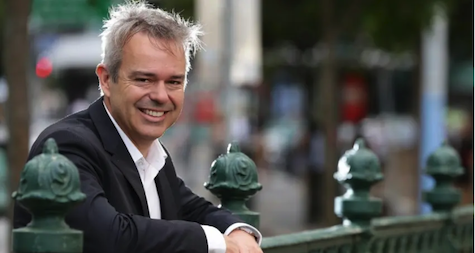Lessons from South Australian entrepreneurs to the world

.
The founder of Zen Energy and now serial entrepreneur states in the introduction “The Essential Entrepreneur” that “this is not a step-by-step ‘how to book’” but then guides you step-by-step from chapter one on how to validate and test your idea all the way through to chapter 17 on “getting out of business”.
And it is a good thing he does.
The “how to” advice from an entrepreneur who has successfully scaled and sold more than three major businesses is the most valuable information in this latest release.
It is even more valuable to South Australian entrepreneurs because, instead of reading about some Silicon Valley start-up making it big in a completely different ecosystem, Turner pulls on his own experiences and those of Tobi Pearce, formerly of SWEAT, Flavia Tata Nardini from Fleet Space Technologies, Simon Haigh from Haigh’s Chocolates and Kirsten Bernhardt, the investment manager at Artesian Alternative Investments.
Their views and stories are presented as asides throughout the 187 page book and serve mainly to reinforce the tips be given by Turner, but the advice and insight provided by Bernhardt in chapter 11 on “getting investment ready” is invaluable for local entrepreneurs.
She points out that while venture capital is maturing in Australia, and there are new sector-specific funds emerging, the challenge is a dearth of limited partners that are not superannuation funds. She says “the challenge now is not so much ‘more money’, but more LPs to get more diversity into the market alongside superannuation funds”.
She continues with five insightful tips that every South Australian entrepreneur should read and concludes with some sound advice to founders wanting VC backing.
“We back great founders with a highly scalable business model,” she notes.
Turner provides most of the insights and the advice is so very local that it makes “The Essential Entrepreneur” a truly Australian book.
For example, Turner recounts how he launched his first family business Regency Food Service on the back of a “trend we saw happening in the United States that we were also seeing signs of in the eastern states of Australia”.
This truly South Aussie statement must be one of the soundest pieces of indirect advice in the entire book: look elsewhere to find a problem that will eventually land (or can be constructed) in South Australia and adapt the already available solutions to the local ecosystem.
Turner did this with his “total foodservice” business and he was able to launch the “right product at the right time” and beat competitors who had not identified the global trend making its way Down Under. He then highlights this strategy with an anecdote about how having Raymond Spencer as the first investor in ZEN Energy gave them a five year head start on Li-ion battery storage.
The battery had not made its way to Australia yet but was essential to scale up a solar company.
Spencer had been an early director of Greensmith Energy Management in the United States and saw the potential at ZEN and helped them secure the essential batteries.
The book’s strength is in these very local tips – from anti-dilution clauses to places like the Australian Investment Council’s templates for shareholder agreements – and chapter 13 on trademarks and patents is arguably the most informative.
Business
Monday, Jan 30
indaily.com.au

